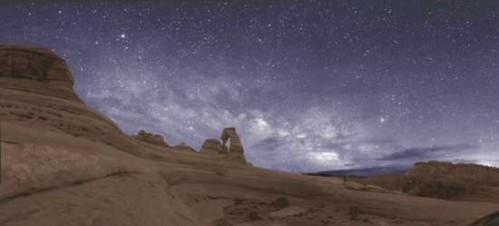Can you see the Milky Way?

The National Park Service estimates that two-thirds of Americans can't see the Milky Way from their backyard because of light pollution. And 99% of the population lives in areas considered light polluted.
At the rate light pollution is increasing, by 2025 there will be no areas in the continental U.S. that are not affected.
Most of the light pollution is caused by wasting electricity. Street lights that aim their light up into the sky are wasting the energy used to make the light. By properly aiming it down where it is needed, money and energy are saved, and people can see the stars again.
Like other forms of pollution, bright city lights are causing harm to wildlife, such as migrating birds, sea turtles, and nocturnal animals such as California's glossy snake. When darkness never falls, predators that hunt in twilight can hunt all night, and the adaptations nocturnal animals depend on are no longer effective. Nocturnal salamanders wait for dark to hunt, and get less food in brightly lit areas. Light affects hormones that tell frogs when to put on fat for egg laying, and fireflies don't mate near incandescent lighting.
Astronomers have been complaining for a long time about light pollution.
We can fix light pollution and save money by doing it. People just need to pay attention to where the light is going. Aim low.

2 Comments:
In San Jose, I feel lucky when I can see constellations, never mind the Milky Way.
Light pollution affects photographers, too, it's more and more difficult to find locations to make star trail images, the slightest bit of sky light will wreak havoc on a 5-hour sky exposure, very sad indeed.
PS: I've never seen stars so bright they could show through cumulus clouds, either. :)
Post a Comment
Links to this post:
Create a Link
<< Home